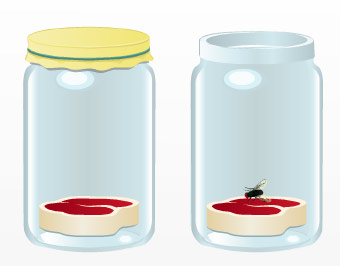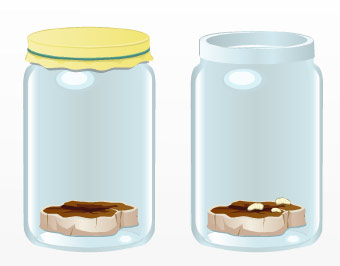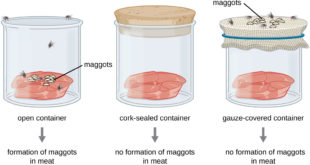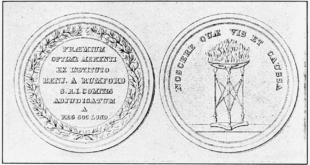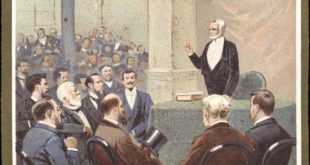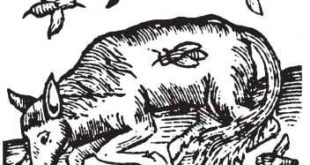The theory of Spontaneous Generation proposed that life or living organisms could be “spontaneously generated” from non living matter. Similar to Louis Pasteur’s spontaneous generation experiment, the 17th century Italian scientist Franceso Redi conducted an experiment to refute the theory of Spontaneous Generation nearly 200 years earlier.

Controlled Experiment by Redi
Francesco Redi showed that maggots do not spontaneously arise from decaying meat. To prove this he designed a simple controlled experiment, now referred to as the “Redi Experiment.” The idea of a controlled experiment is that two tests are identical in every aspect, except for one factor. When carried out simultaneously, the hypothesis is that this differing factor (called the “manipulated variable”) is the cause of the different results in each experiment.
Redi’s Experiment Explained
1. Redi placed meat in two identical jars. He left one jar uncovered and allowed flies to come into contact with the meat. He covered the other jar with a cheese cloth or other cloth that allowed air to pass through. Contact with the air allowed the meat to decay, just as the other would. Hypothesis: Both pieces of meat would decay, but only the one that had physical contact with the flies would produce maggots. Therefore, the decay itself would be eliminated as the cause.
2. After a short period of time Redi observed maggots (fly larvae) on the decaying meat of the open jar. There were no maggots on the meat in the covered jar.
3. Redi concluded that the flies laid eggs on the meat in the open jar which caused the maggots. Because the flies could not lay eggs on the meat in the covered jar, no maggots were produced. Redi therefore proved that decaying meat did not produce maggots.
Try it at Home
With a few simple items, you can try the same spontaneous generation experiment at home.
You’ll need:
Jars with Lids
Cheesecloth
Rubber Bands
Apples
- Slice up an apple and put a few pieces in each of 3 jars.
- Put a lid tightly on one jar.
- Put some cheesecloth on top of another jar, securing it with a couple of rubber bands.
- Leave the third jar uncovered.
- Set the jars out in an open area for a couple of days.
You may notice no flies or maggots on the jar with the lid, some flies or maggots on top of the cheesecloth (not inside the jar), and even some maggots or flies inside the open jar.
What does this experiment prove? Did your results match Francesco Redi’s spontaneous generation experiment?
 Pasteur Brewing Louis Pasteur – Science, Health, and Brewing
Pasteur Brewing Louis Pasteur – Science, Health, and Brewing 